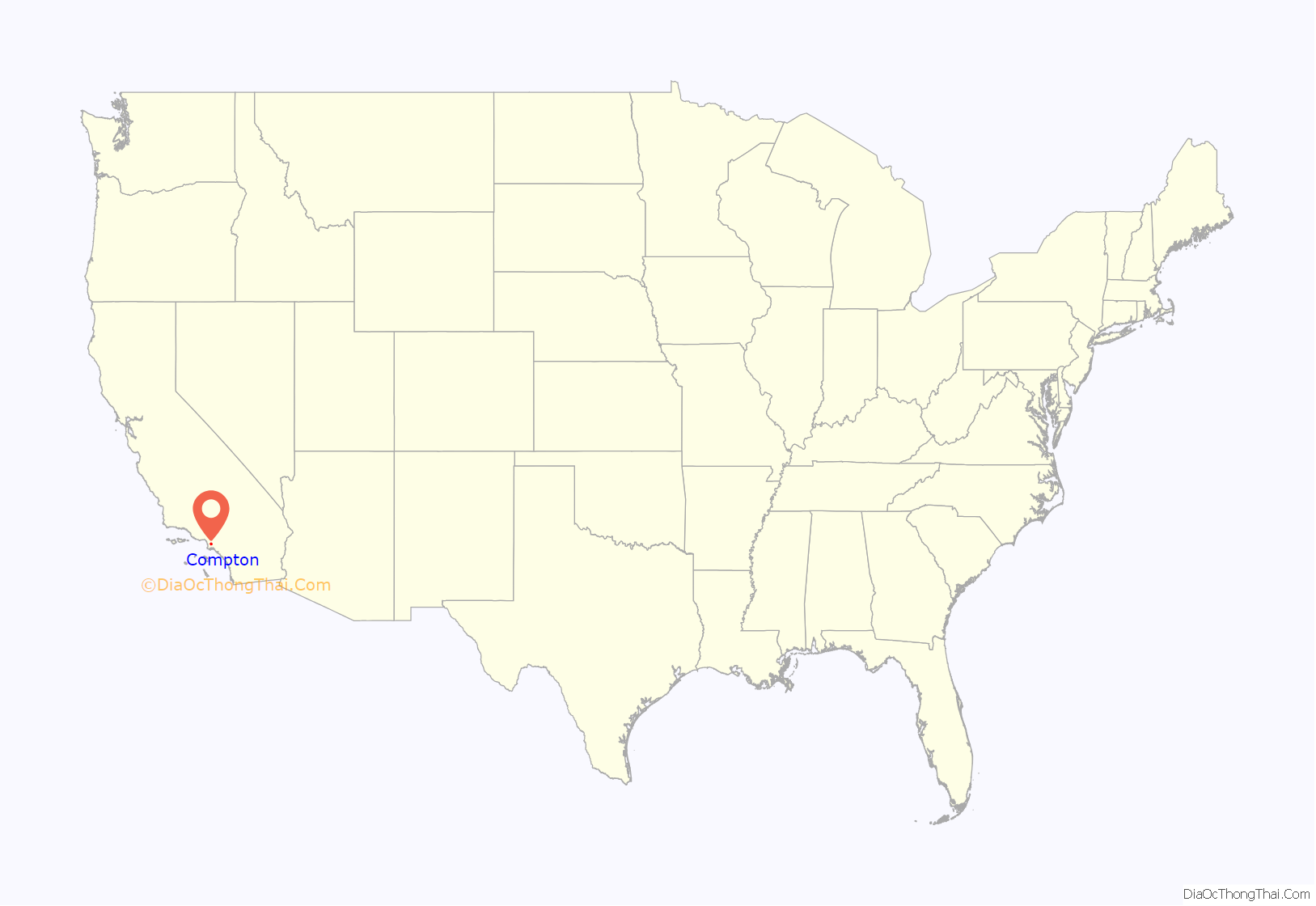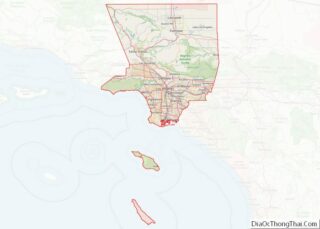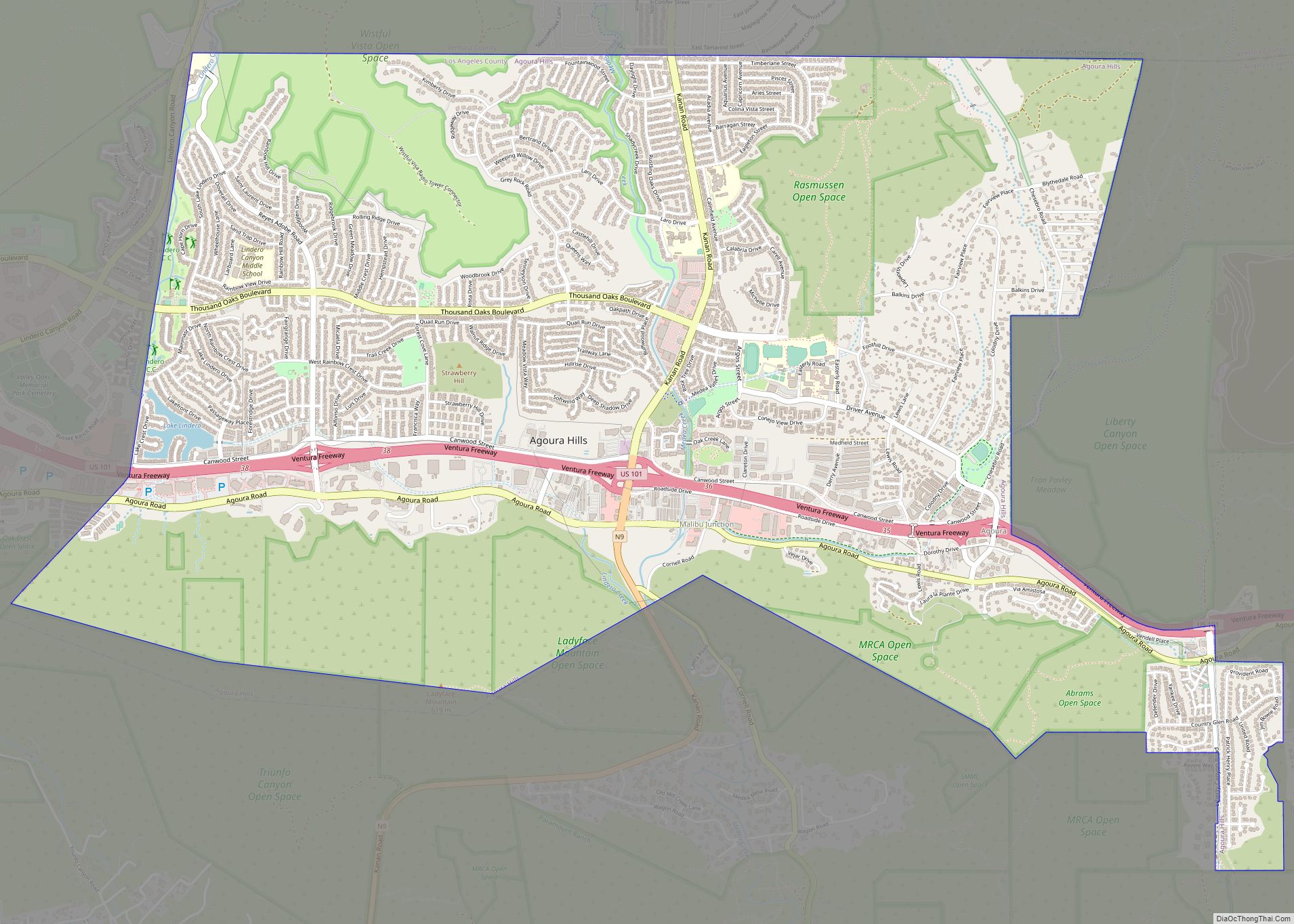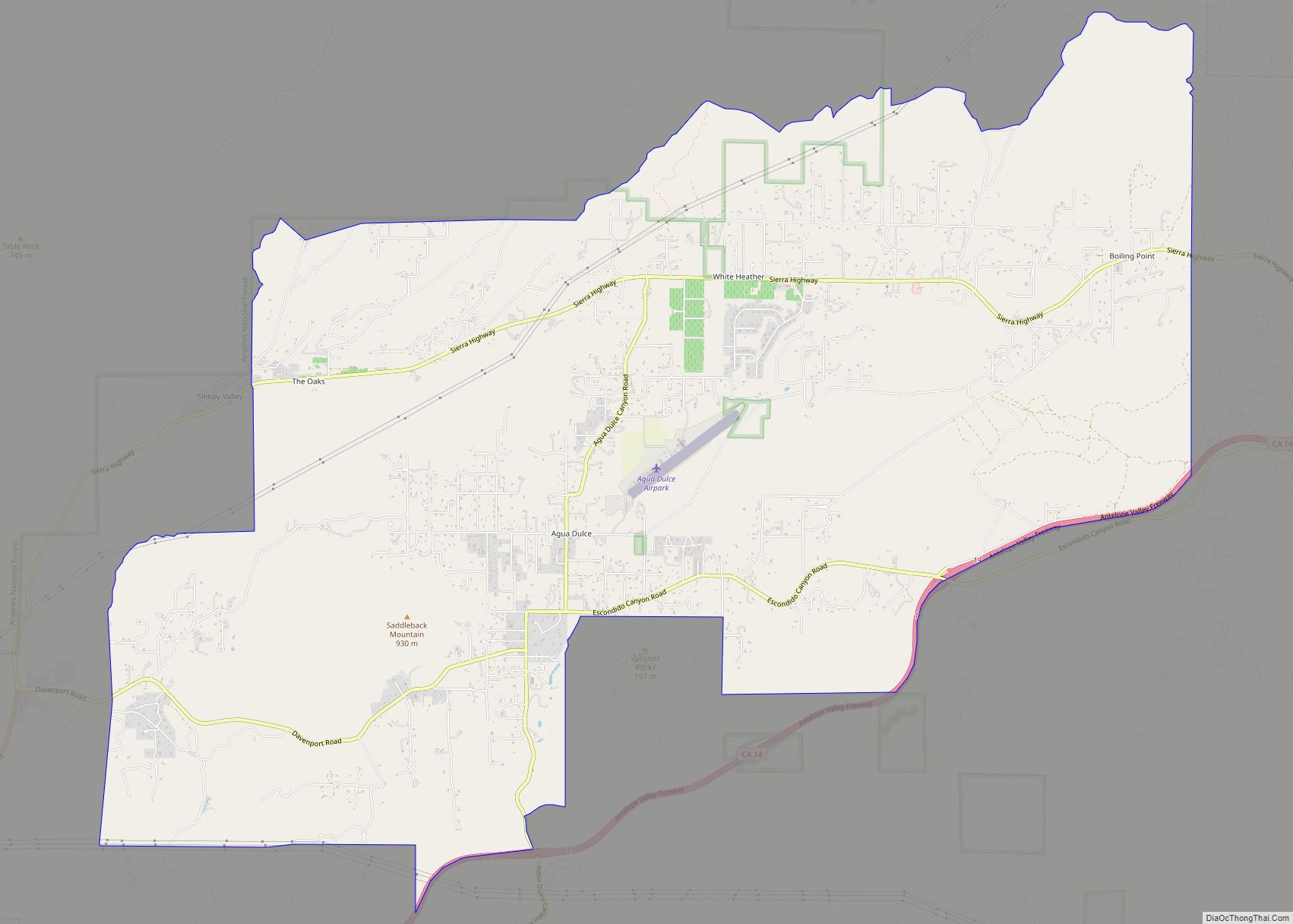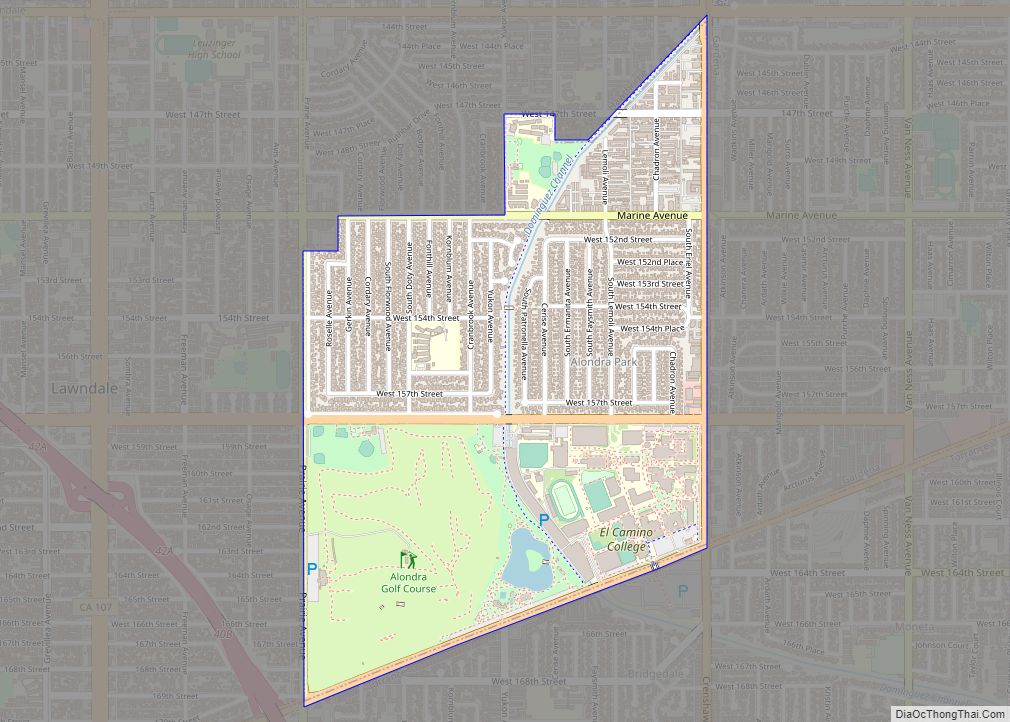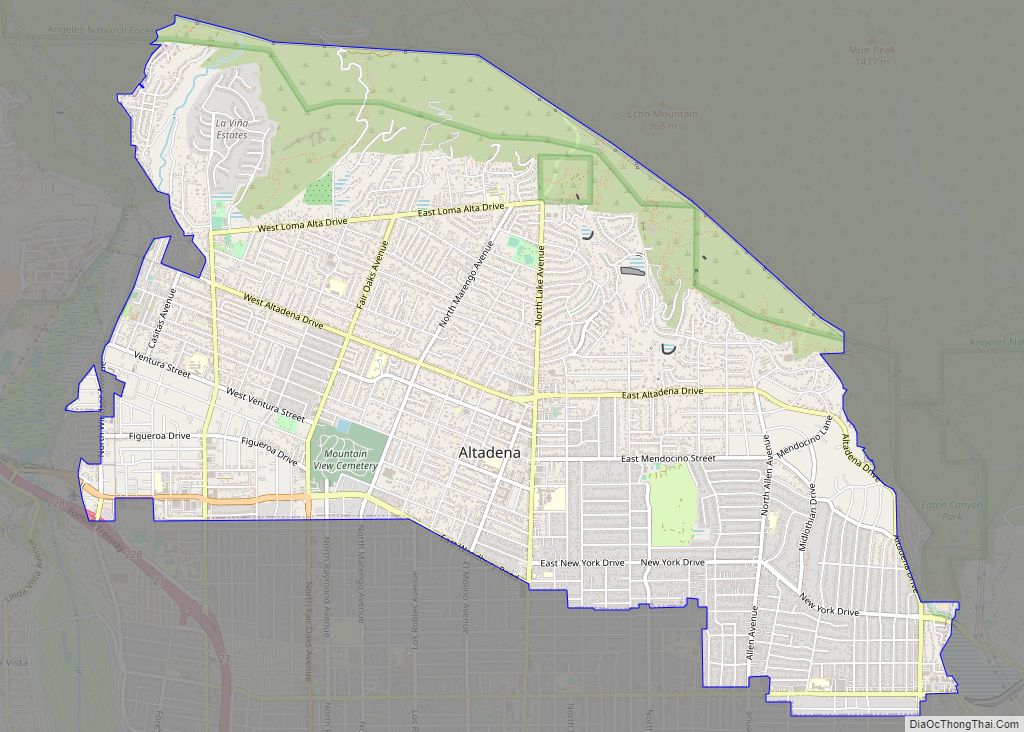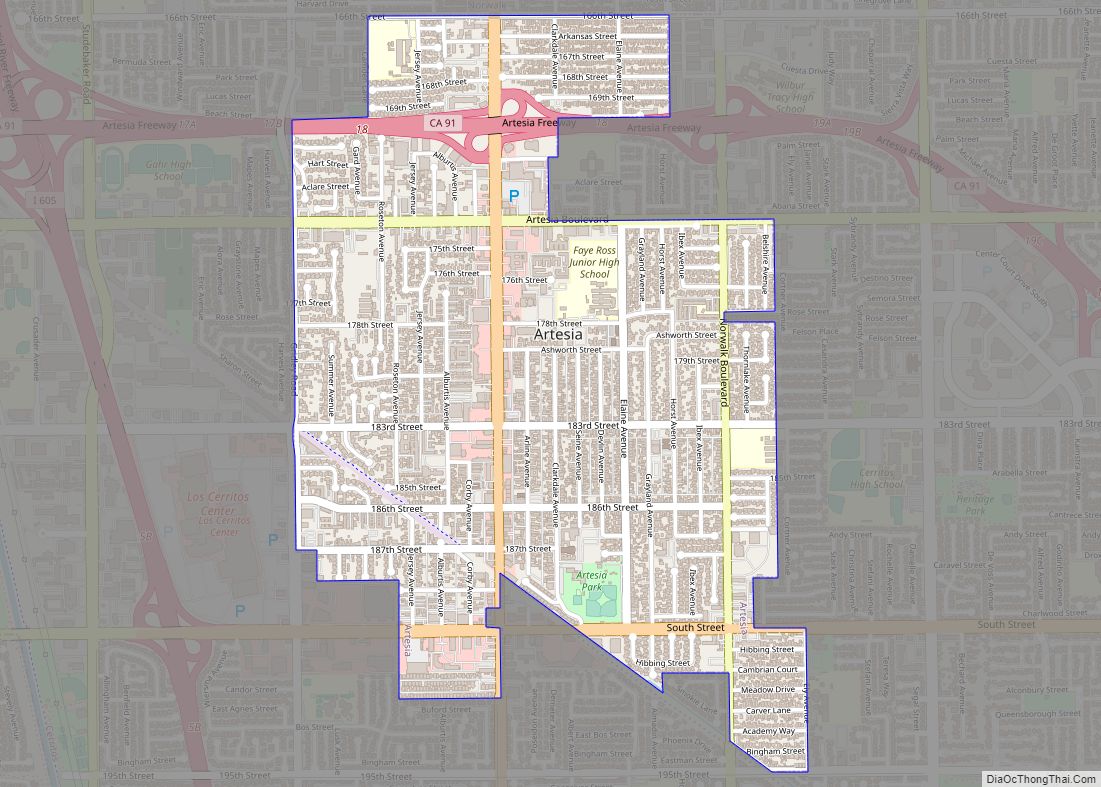Compton is a city in southern Los Angeles County, California, United States, situated south of downtown Los Angeles. Compton is one of the oldest cities in the county and, on May 11, 1888, was the eighth city in Los Angeles County to incorporate. As of the 2010 United States Census, the city had a total population of 96,456. It is known as the “Hub City” due to its geographic centrality in Los Angeles County. Neighborhoods in Compton include Sunny Cove, Leland, downtown Compton, and Richland Farms. The city has a high poverty rate and is generally a working-class community. Furthermore, Compton is known for its high crime rate, but strong culture. It is also well known for its hip hop scene.
| Name: | Compton city |
|---|---|
| LSAD Code: | 25 |
| LSAD Description: | city (suffix) |
| State: | California |
| County: | Los Angeles County |
| Incorporated: | May 11, 1888 |
| Elevation: | 69 ft (21 m) |
| Total Area: | 10.12 sq mi (26.20 km²) |
| Land Area: | 10.03 sq mi (25.97 km²) |
| Water Area: | 0.09 sq mi (0.23 km²) 1.03% |
| Total Population: | 95,740 |
| Population Density: | 9,548.22/sq mi (3,686.42/km²) |
| ZIP code: | 90220–90224 |
| FIPS code: | 0615044 |
| Website: | www.comptoncity.org |
Online Interactive Map
Click on ![]() to view map in "full screen" mode.
to view map in "full screen" mode.
Compton location map. Where is Compton city?
History
The Spanish Empire had expanded into this area when the Viceroy of New Spain commissioned Juan Rodríguez Cabrillo to explore the Pacific Ocean in 1542–1543. In 1767, the area became part of the Province of the Californias (Spanish: Provincia de las Californias), and the area was explored by the Portolá expedition in 1769–1770. In 1784, the Spanish Crown deeded Rancho San Pedro, a tract of over 75,000 acres (300 km), to soldier Juan José Domínguez. Domínguez’s descendants partitioned the land amongst family members, sold parcels to newly arriving settlers, and relinquished some when validating their legal claim with the Mexican government at 48,000 acres (190 km) in 1828, and with the United States government through a patent validating 43,119 acres (174.50 km) in 1858. The Domínguez family name is still applied throughout the area, including the Dominguez Rancho Adobe historical landmark, in the unincorporated community of Rancho Dominguez, located between the cities of Compton, Long Beach and Carson. The tree that marked the original northern boundary of the rancho still stands at the corner of Poppy and Short streets.
In 1867, Griffith Dickenson Compton led a group of 30 pioneers to the area. These families had traveled by wagon train south from Stockton, California, in search of ways to earn a living other than the rapid exhaustion of gold fields. Originally named Gibsonville, after one of the tract owners, it was later called Comptonville. However, to avoid confusion with the Camptonville located in Yuba County, the name was shortened to Compton. Compton’s earliest settlers were faced with terrible hardships as they farmed the land in bleak weather to get by with just the barest subsistence. The weather continued to be harsh, rainy and cold, and fuel was difficult to find. To gather firewood it was necessary to travel to mountains close to Pasadena. The round trip took almost a week. Many in the Compton party wanted to relocate to a friendlier climate and settle down, but as there were two general stores within traveling distance—one in the pueblo of Los Angeles, the other in Wilmington—they eventually decided to stay put.
By 1887, the settlers realized it was time to make improvements to the local government. A series of town meetings were held to discuss incorporation of their little town. Griffith D. Compton donated his land to incorporate and create the city of Compton in 1889, but he did stipulate that a certain acreage be zoned solely for agriculture and named Richland Farms. In January 1888, a petition supporting the incorporation of Compton was forwarded to the Los Angeles County Board of Supervisors, who in turn forwarded the petition to the State Legislature. On May 11, 1888, the city of Compton was incorporated with a population of 500 people. The first City Council meeting was held on May 14, 1888.
In 1890, a series of votes were held by the residents of Compton, with the aim of shedding significant portions of the city. By the end of the year, Compton was down to only eighty acres of land, with five remaining voters residing within that territory. Due to the limited number of people able to fill positions within the city government, Compton effectively ceased to exist as a functioning city. By 1906, lawyers Emmett Wilson and E.T. Sherer filed suits to nullify the 1890 elections, which in turn restored Compton to a size of 600 acres. Compton was reborn, with elections held to fill open positions.
The ample residential lots of Richland Farms gave residents enough space to raise a family, and food to feed them, along with building a barn, and caring for livestock. The farms attracted the black families who had begun migrating from the rural South in the 1950s, and there they found their ‘home away from home’. Compton could not support large-scale agricultural business, but it did give the residents the opportunity to work the land for their families.
The 1920s saw the opening of the Compton Airport. Compton Junior College was founded and city officials moved to a new City Hall on Alameda Street. On March 10, 1933, a destructive earthquake caused many casualties: schools were destroyed and there was major damage to the central business district. While it would eventually be home to a large black population, in 1930 there was only one black resident.
From the 1920s through the early 1940s, the Compton area was home to a sizable Japanese American population, a large proportion of whom were farmers. Shortly after President Roosevelt issued Executive Order 9066 in February 1942, Compton residents of Japanese descent were forcibly removed from their homes and interned for the duration of World War II. Most were initially detained at the Santa Anita Assembly Center; they were later transferred to and incarcerated at Manzanar and other internment centers, called “Relocation Centers.”
In the 1950s, middle-class black families began moving into the area, mostly on the west side. Compton grew quickly throughout the decade. One reason for this was Compton was close to Watts, where there was an established black population. The eastern side of the city was predominantly white until the 1970s. Despite being located in the middle of a major metropolitan area, thanks to the legacy of Griffith D. Compton, there still remains one small pocket of agriculture from its earliest years.
During the 1950s and 1960s, after the Supreme Court declared all racially exclusive housing covenants (title deeds) unconstitutional in the case Shelley v. Kraemer, the first black families moved to the area. Compton’s growing black population was still largely ignored and neglected by the city’s elected officials. Centennial High School was finally built to accommodate a burgeoning student population. The City Council discussed dismantling the Compton Police Department in favor of the Los Angeles County Sheriff’s Department. A black man first ran for City Council in 1958, and the first black councilman was elected in 1961.
In 1969, Douglas Dollarhide became the mayor, the first black man elected mayor of any metropolitan city in California. Two African Americans and one Mexican-American were also elected to the local school board. Four years later, in 1973, Doris A. Davis defeated Dollarhide’s bid for re-election to become the first female black mayor of a metropolitan American city. By the early 1970s, the city had one of the largest concentrations of African Americans in the country, at over sixty five percent. In 2013, Aja Brown, age 31, became the city’s youngest mayor to date.
For many years, Compton was a much sought-after suburb for the black middle class of Los Angeles. This past affluence is reflected in the area’s appearance: Compton’s streets are lined with relatively spacious and attractive single family houses. However, several factors have contributed to Compton’s gradual decline. One of the most significant factors was a steady erosion of its tax base, something that was already sparse due to limited commercial properties. In later years, there were middle-class whites who fled to the newly incorporated cities of Artesia, Bellflower, Cerritos, Paramount and Norwalk in the late 1950s. These nearby cities remained largely white early on, despite integration. This white middle class flight accelerated following the 1965 Watts Riots and the 1992 Los Angeles riots.
By the late 1960s, middle-class and upper-middle-class African Americans found other areas to be more attractive to them. Some were unincorporated areas of Los Angeles County such as Ladera Heights, View Park and Windsor Hills, and others were cities such as Inglewood and Carson. Carson was particularly significant, because it had successfully thwarted attempts at annexation by neighboring Compton. The city opted instead for incorporation in 1968; notably, its black population was actually more affluent than its white population. As a newer city, it also offered more favorable tax rates and lower crime.
Compton Road Map
Compton city Satellite Map
Geography
According to the United States Census Bureau, the city has a total area of 10.1 square miles (26 km). 10.0 square miles (26 km) of it is land and 0.1 square miles (0.26 km) of it (1.03%) is water.
Compton is bordered by the unincorporated Willowbrook on the north and northwest, the unincorporated West Compton on the west, the city of Carson on the southwest, the unincorporated Rancho Dominguez on the south, the city of Long Beach on the southeast, the city of Paramount and the unincorporated East Compton on the east, and by the city of Lynwood on the northeast.
East Compton
East Compton, also known as East Rancho Dominguez, is a mostly industrial unincorporated community and census-designated place (CDP). The population was 15,135 according to the 2010 Census. East Rancho Dominguez is an accepted city name according to the USPS, and shares the 90221 ZIP Code with Compton. Its sphere of influence is the city of Compton, which has tried to annex East Rancho Dominguez, but business and property owners in the area have opposed the annexation.
Climate
See also
Map of California State and its subdivision:- Alameda
- Alpine
- Amador
- Butte
- Calaveras
- Colusa
- Contra Costa
- Del Norte
- El Dorado
- Fresno
- Glenn
- Humboldt
- Imperial
- Inyo
- Kern
- Kings
- Lake
- Lassen
- Los Angeles
- Madera
- Marin
- Mariposa
- Mendocino
- Merced
- Modoc
- Mono
- Monterey
- Napa
- Nevada
- Orange
- Placer
- Plumas
- Riverside
- Sacramento
- San Benito
- San Bernardino
- San Diego
- San Francisco
- San Joaquin
- San Luis Obispo
- San Mateo
- Santa Barbara
- Santa Clara
- Santa Cruz
- Shasta
- Sierra
- Siskiyou
- Solano
- Sonoma
- Stanislaus
- Sutter
- Tehama
- Trinity
- Tulare
- Tuolumne
- Ventura
- Yolo
- Yuba
- Alabama
- Alaska
- Arizona
- Arkansas
- California
- Colorado
- Connecticut
- Delaware
- District of Columbia
- Florida
- Georgia
- Hawaii
- Idaho
- Illinois
- Indiana
- Iowa
- Kansas
- Kentucky
- Louisiana
- Maine
- Maryland
- Massachusetts
- Michigan
- Minnesota
- Mississippi
- Missouri
- Montana
- Nebraska
- Nevada
- New Hampshire
- New Jersey
- New Mexico
- New York
- North Carolina
- North Dakota
- Ohio
- Oklahoma
- Oregon
- Pennsylvania
- Rhode Island
- South Carolina
- South Dakota
- Tennessee
- Texas
- Utah
- Vermont
- Virginia
- Washington
- West Virginia
- Wisconsin
- Wyoming
